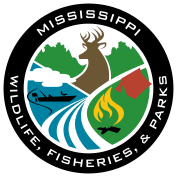
Ivy Trek Ultra
Hugh White’s Spooky Tricks and Treats Halloween
Camp and Jam – Bluegrass at Lake Lowndes
Federal regulations which require tagging to account for harvest of bobcat and river otter are in effect. The Commission requires the tagging of otter and bobcat, to account for harvest of these species, which are subject to federal export…
News
In this episode of the Mississippi Outdoors Podcast, Matt Wyatt sits down with land agent and outdoor TV host Slade Priest, better known as The Hunting Land Man.
Youth Dove Hunt at Leroy Percy State Park’s WMA
Leroy Percy State Park's WMA Dove Field Opens
Event Title: Youth Fishing Rodeo
Friends of the Park Picnic
Bike Your Park Day at Leroy Percy State Park
Breast Cancer Awareness Month at Trace State Park
Trekking the Trails at Tishomingo
Trekking the Trails at Tishomingo
Trekking the Trails at Tishomingo
Trekking the Trails at Tishomingo
Trace State Park Fall Festival
Roosevelt Chess Classic
News
In this episode of the Mississippi Outdoors Podcast, Matt Wyatt is joined by Gary Holcomb, coordinator of the Mississippi Scholastic Shooting Program (MSSP).
From now until October, when you book an RV or primitive site at Mississippi State Parks, you can receive $10 off per night for your stay from November to January.
From now until October, when you book an RV or primitive site at Mississippi State Parks, you can receive $10 off per night for your stay from November to January. This statewide promotion applies to all camping options including Gulf View sites at Buccaneer State Park, Nightly campsites, Primitive Camping, and Premium Primitive Camping.